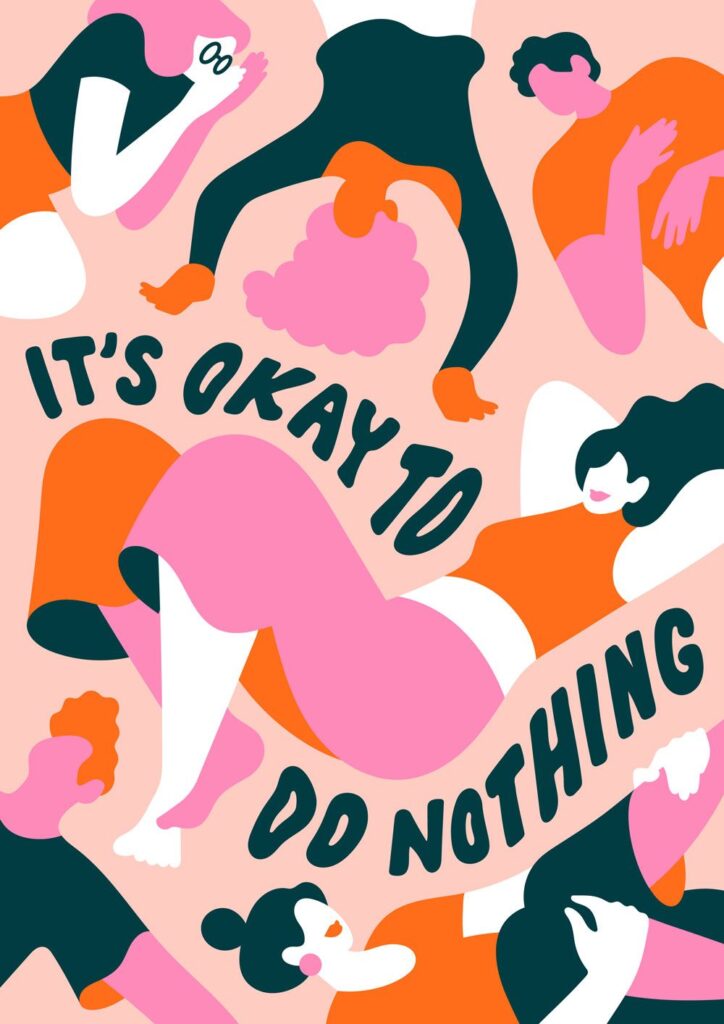The Art Of Doing Nothing: Why Embracing Intentional Idleness Is The Most Productive Thing You Can Do
Contents Overview
Have you ever noticed how life sometimes feels like running on a treadmill, where you’re moving nonstop and ending the day feeling drained and unsatisfied? That’s what happens when we get stuck in the cycle of always needing to do more. Our society often glorifies and praises busyness, making us feel guilty for taking rest – as if rest is a reward we have to earn. But in reality, this constant pressure is exactly what leads to stress and burnout.
Think about it, how often do you catch yourself filling every spare moment with something, even if it’s just scrolling on your phone? We’re so used to keeping ourselves occupied that the idea of stopping feels wrong. But here’s the truth: the real secret to feeling lighter, calmer, and even more productive might just lie in the art of doing nothing.
Doing nothing doesn’t mean you’re lazy or giving up. It’s actually a choice – a way to reset your mind and body. For example, imagine sitting by the window with a cup of tea, no phone, no to-do list, just you and the quiet. In that stillness, you give your mind space to breathe, and that’s where clarity and peace show up.
This is what the art of doing nothing is all about – stepping off the treadmill, even if just for a little while, and letting yourself exist without the weight of “what’s next.” And often, that’s the exact pause you need to prevent burnout and feel like yourself again.
What Do You Really Mean By The Art Of Doing Nothing?
So, what do we really mean when we talk about the art of doing nothing? It’s not the same as scrolling on your phone for hours or binge-watching a series. That’s still a kind of “doing.” What I’m talking about is niksen – a Dutch word that simply means doing nothing, but with intention. Imagine sitting by the window, watching the clouds drift by, without waiting for some deep thought to hit you. Or listening to music just because you enjoy it, not because you’re trying to analyze every lyric.
The beauty of niksen is that it gives your mind and body a break from the constant push to achieve. In a world where burnout has become so common, this practice feels almost essential. It’s a gentle reminder that rest isn’t wasted time, it’s in fact a way to create space for new ideas, natural creativity, and real relaxation.
If you’re new to this, just start small. Take five minutes to pause with no agenda, no phone, no checklist. That little step is the beginning of understanding the art of doing nothing and it might be exactly what you need to balance the current nonstop demands of life.
The Science Behind The Art Of Doing Nothing
The benefits of the art of doing nothing aren’t just feel-good ideas, they’re backed by science. When you give your mind a break from constant tasks, something amazing happens: your brain’s Default Mode Network (DMN) switches on. This part of the brain is linked to self-reflection, daydreaming, and creative thinking. That’s why your best ideas often pop up in the shower, while driving, or even when walking the dog – those small moments when you’re not actively “trying” to remember or solve something.
But the science behind the art of doing nothing goes even deeper. Constant busyness keeps your body pumping out stress hormones like cortisol, which, over time, can push you straight toward burnout. On the other hand, choosing to pause, even for a few minutes, sends your body the message that it’s safe to rest. Stress levels drop, your nervous system slows down, and your whole body finally gets the chance to reset.
This is where practices like niksen come in. It’s not laziness but a proven way to restore balance. And if the idea of sitting still feels strange, don’t worry. Start small. Even five quiet minutes of simply existing with no phone, no to-do list, can bring powerful benefits for your mind, body, and overall well-being.

How To Embrace The Art Of Doing Nothing
Learning to embrace the art of doing nothing takes practice, especially if you’re used to always being busy. But it doesn’t have to feel overwhelming. Here are a few simple ways to bring this practice into your daily life and protect yourself from burnout.
⭐ Start small. Don’t pressure yourself to suddenly sit still for an hour. Begin with just 5 minutes a day. Set a timer, sit quietly, and allow yourself that little pause. Even this small step counts.
⭐ Schedule it. Free time rarely appears on its own. Block off “do-nothing time” in your calendar the way you would schedule a meeting or workout. When you treat it like a real appointment, you’re more likely to honor it.
⭐ Find your spot. Choose a place that feels calm and welcoming. It can be a chair by the window, your garden, or even a quiet park bench. Having a specific spot makes your practice feel like a ritual.
⭐ Put away your phone. This one’s big. Our phones are distractions disguised as comfort. To practice niksen with honesty, keep your phone in another room so you’re not tempted to scroll or use it.
⭐ Listen to your body. When you sit down, notice how you feel. Are your shoulders tight? Is your breathing shallow? This is your chance to let your body unwind without forcing anything.
⭐ Don’t have a plan. Remember, the art of doing nothing isn’t about solving problems or brainstorming. It’s about being in the moment. Sit without an agenda and let your mind wander.
⭐ Embrace boredom. Instead of fighting it, lean into boredom. It can feel uncomfortable at first, but it’s often the doorway to fresh thoughts and unexpected insights.
⭐ Notice your surroundings. Look at the details around you – the light coming in, the sound of the wind, or the patterns on the floor. Just observe them without analyzing.
⭐ Try silent moments. In a noisy world, silence feels like a rare gift. Allow yourself a few minutes with no background music, no podcasts, no distractions. Just pure quiet.
⭐ Combine with a routine. Pair your “do-nothing time” with something you already do daily, like right after your morning coffee or before bed. This makes it easier to stick with.
⭐ Be kind to yourself. Some days you’ll drift into thoughts or get restless after a minute. That’s okay. This is a practice, not a test. The more you return to it, the easier it gets.
By starting small and practicing regularly, you’ll find that the art of doing nothing is not only calming but also one of the most powerful ways to prevent burnout and bring balance back into your life.

5 Benefits Of The Art Of Doing Nothing
If you’ve ever wondered why the art of doing nothing matters, the answer is simple – it changes how you feel, think, and live. When you give yourself permission to pause, even through something as simple as niksen, you’re not wasting time. You’re actually giving your mind and body exactly what they need. Here are five powerful benefits:
1. Boosts Creativity. When you stop chasing a result and let your mind wander, new ideas naturally appear. Think about how your best thoughts often show up in the shower or on a walk – that’s the art of doing nothing at work.
2. Reduces Stress. Constant busyness keeps stress hormones running high, which can lead straight to burnout. Taking intentional breaks lowers cortisol levels, calms your nervous system, and brings you back to balance.
3. Improves Focus. Short, planned moments of idleness recharge your brain. When you return to your work, you’ll find it easier to concentrate, make progress, and actually feel productive instead of drained.
4. Enhances Problem-Solving. Sometimes the harder you push for an answer, the further it slips away. By stepping back, your subconscious gets room to connect the dots and offer solutions you wouldn’t have found otherwise.
5. Increases Well-being. Letting go of the constant pressure to achieve goals feels freeing. Practicing the art of doing nothing helps you feel more content, present, and kinder toward yourself.
Ultimately, the art of doing nothing is a gentle yet powerful way to protect your mind and body from burnout. In a world that constantly pushes us to do more, choosing stillness becomes an act of quiet courage. It’s a reminder that rest isn’t wasted time – it’s what helps us breathe, reset, and find our way back to ourselves.
Start small, even if it’s just a few minutes of niksen each day. With every pause, you’re giving yourself permission to slow down, think more clearly, and feel more grounded. Doing nothing isn’t about laziness – it’s about creating space for the life you actually want to live, one calm breath at a time.



